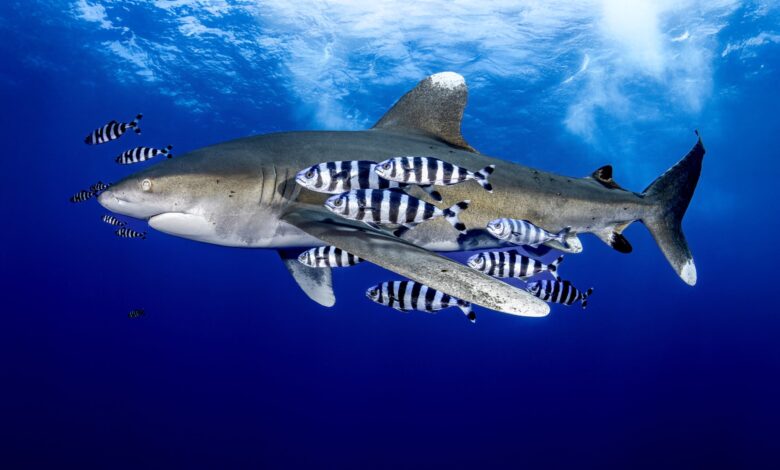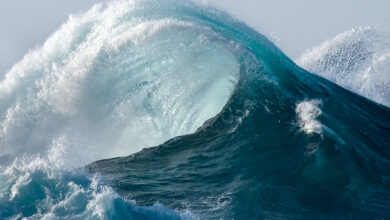
An oceanic white tip shark (Carcharhinus longimanus) with pilot fish (Naucrates ductor). Image Credit: Courtesy of Renata Romeo/Ocean Image Bank
Environment USANew and Improved Protection for the High Seas
The landmark treaty for marine conservation has now reached enough ratifications to become a binding law, paving the way for protection across vast international waters.
“This is a super big deal, both for ocean protection and for proving that there’s still hope in multilateralism,” said Arlo Hemphill, oceans project lead at Greenpeace USA.
Known as the BBNJ (Biodiversity Beyond National Jurisdiction) Agreement, the treaty will enter into force on 17 January 2026, after Morocco became the 60th country to ratify it on 19 September 2025. It introduces new tools for the ocean: the power to establish marine protected areas (MPAs) in international waters, requirements for environmental impact assessments on deep-sea projects, rules for access to marine genetic resources, and support for capacity-building in low-income countries. Less than 1.5% of the high seas are currently protected. With this treaty, the world finally has a binding framework to safeguard marine life far beyond national borders — one that could transform how oceans are managed for the benefit of both people and nature.



